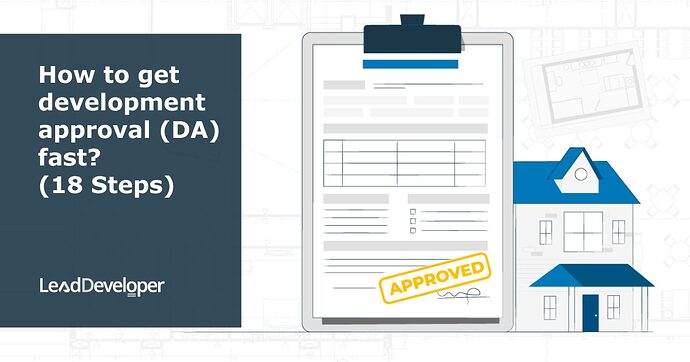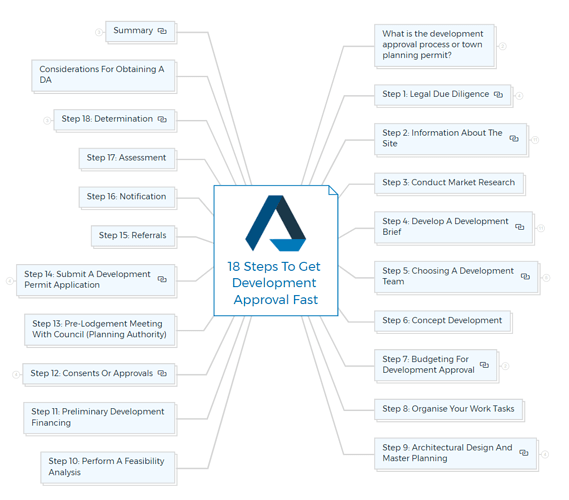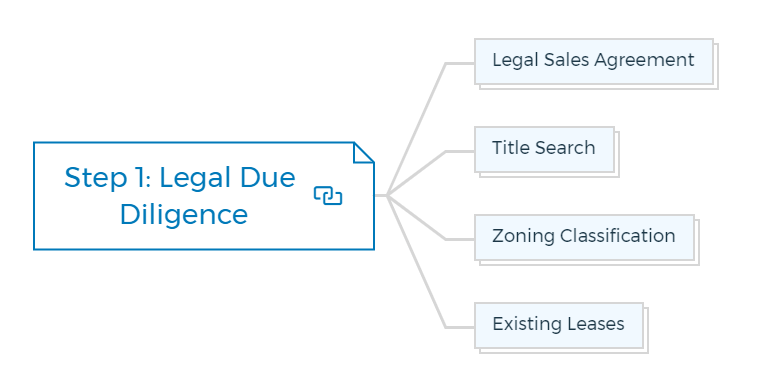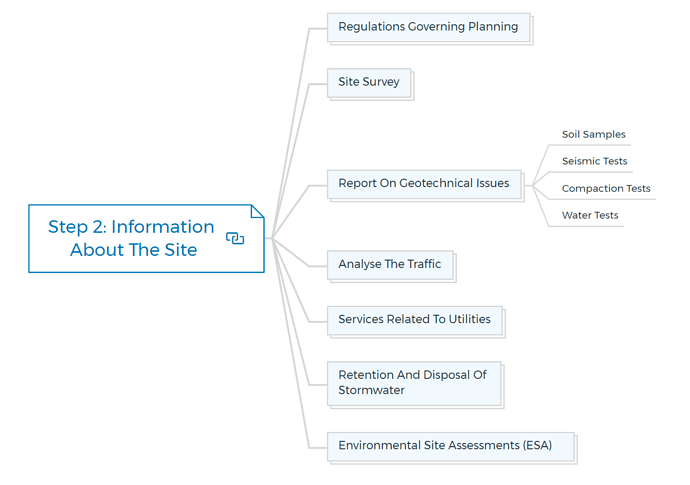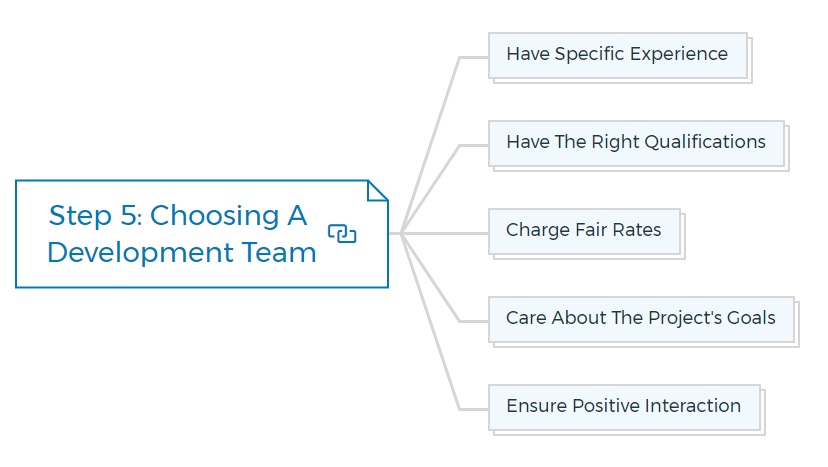What is the development approval or town planning permitting process?
Development approval, which is also called a permit or a planning permit, is a legally binding agreement from the right authority that says a development can happen on a certain site based on the rules of the planning scheme.
The permit process begins after the selection of a development site and before the start of the construction. You can determine the project’s viability by performing several activities such as design, cost estimates, economics, market research, etc.
The development approval process
The table below depicts the procedure and the steps that each team member must do.
Town Planning Permit Vs Building Permit
Town planning permit (development approval) and building permit (building approval) are two separate processes that often confuse new developers.
Quick Tip
A development approval permits you for the development or land use by ensuring that it complies with local planning schemes and other regulatory policies.
While, the building permit assures that the structure is sound and follows all construction regulatory laws and building codes & standards. It also requires that a licensed or registered builder is doing the work.
You are missing out if you haven’t yet subscribed to our YouTube channel.
You will get a planning permit before the issuance of the building permit. Because not all construction or development activity necessitates a permit, it’s good practice to double-check with the appropriate authority before filing for either.
Below are crucial 18 steps to DA approval process
Step 1: Legal due diligence
Before beginning the development approval procedure, it is critical to conduct due diligence. Typically, all legal concerns are handled by a lawyer who specialises in real estate development. The following are some of the areas that a lawyer should cover:
Legal sales agreement
Initially, the lawyer will develop and assist in negotiating the land acquisition agreement.
Title search
The lawyer conducts a title search to confirm the current owner and identify any restrictions on the title, such as easements. Because most developers will be unable to finance a property with title restrictions, the sooner they are aware of potential title issues, the more time they will have to address them.
Zoning classification
A lawyer confirms the property’s zoning regulations with the local planning authority. The appointed architect or municipal planner can help in this. It is critical to validate and verify the zoning and relevant information in writing.
Existing leases
If the property has any existing leases, the lawyer should go over the terms and circumstances of those leases. If the developer must terminate the current leases, the lawyer can provide legal advice.
Learn More
Step 2: Information about the site
Before the design team may begin working on more comprehensive schematic architectural plans, it is critical to acquire specific engineering data.
The commissioned consultants gather and analyse data before making recommendations on improving existing conditions to suit the real estate projects.
Your consultants must identify trouble areas to reduce the developer’s risks. The engineering data cover the following regions.
Regulations governing planning
The architect or town planner will meet with the developer to discuss the concept at the approval stage. Next, the developer will provide the architect with essential property information, including the land’s location, size (area), current zoning, a copy of the topographic survey, and the design brief.
Following the evaluation, the architect will call the local planning and building authority to confirm the current zoning and identify the required construction codes for the task.
Site survey
A land surveyor should complete an updated topographical and feature survey of the site. The surveyor will conduct on-site fieldwork and then produce a drawing that depicts the terrain and other aspects of the site and the structures of nearby neighbours.
This drawing will aid the architect in assessing the design concerning the site’s attributes. You should include the following information in a standard site survey:
- Particulars of the title
- Poles for street lighting
- Location of the property
- A stormwater catchment area
- Date of the survey
- Sewage system locations
- A water supply location
- The scale of the drawing
- A gas supply location
- Easements that already exist
- A site where electricity is available
- Ways of travel
- Buildings on the same property
- Telecommunication service location
- Location of any existing structures
- Direction of views
- Existing fences’ placement
- Lakes, ponds, and streams
- Trees and vegetation that already exist
- Existing pavements utility pole placements
- Locations of rock outcroppings
- Streets and parking lots that are already in place
- Predetermined contour intervals
- Locations of extant structures
In my Quick-start property development course, I will navigate you to all the inherent complexities of property development. You will be able to apply the right property development strategy with the most significant profit.
Report on geotechnical issues
Geotechnical engineers will carry out this work. Unknown soil conditions can increase the cost of a new development significantly. Rock formations, underground water, clay conditions, and toxic soil are examples of situations that could be costly to remove or treat.
If any of these problems are discovered, there should be a renegotiation in the site’s pricing. The following factors are considered while determining soil conditions:
Soil samples
Samples are gathered at various subsurface depths and examined to determine the contents of the soil.
Seismic tests
If rock is discovered, seismic tests are used to determine the depth of rock formations by employing sound waves.
Compaction tests
These tests are used when dirt has been transported to a different location on the property. They determine the new soil’s compact strength.
Water tests
These tests determine how much water is absorbed by the soil.
Analyze the traffic
The new development often increases the number of people and automobiles. Traffic engineers research how traffic moves in response to population expansion.
They are qualified to design roads in response to anticipated traffic challenges. Most authorities will demand a traffic effect analysis submitted with a DA or town planning application.
Services related to utilities
There are existing utility services such as water supply, sewage, and gas. In that case, the hydraulics engineer should confirm whether the new development will impact these existing utilities.
If so, at what cost to the project. The electrical engineer also evaluates electrical power and telecommunications.
Retention and disposal of stormwater
Civil engineers will collaborate with regulatory agencies in charge of wetlands and waterway maintenance. Local governments will want a strategy for releasing water from the construction site.
Environmental site assessments (ESA)
Environmental testing may be used to verify the existence of chemical contaminants in the air or soil in a built-up region where an older building is removed. A new (‘greenfield’) project on virgin soil necessitates resolving several environmental challenges involving both government and public agencies.
These environmental studies, which could include an examination of a development site’s environmental impact or recommendations for creating an environmentally sustainable project, can be handled by an environmental consultant.
Step 3: Conduct market research
Market research is highly crucial in the success of a development project. To direct and inform the design team, the developer will need to do market research on the renters or buyers of the proposed development.
The study is based on market trends, demographics, competition, and current market conditions gathered by marketing consultants. Market research firms, real estate agents, and property valuers are all examples of marketing consultants.
All reasonable development decisions start with accurate and impartial market research. The following are some study topics to consider:
- Analyses of demographics and target markets
- Market characteristics and trends
- Market information by location
- Product and pricing recommendations are included in the project analysis.
- A study of project activity in a competitive environment
- Analysis of price and sales
- Advice on rental and investment properties, including return analysis
- Monetary indicators
- Focus groups are part of social research.
Step 4: Develop a development brief
A well-defined development brief is critical since it serves as a roadmap for success. The developer and the development manager should determine what is best for the site and target market and then write their conclusions.
These judgments, documented in a formal document, will aid team members in understanding the project’s goals and providing realistic cost and programme design suggestions.
IMPORTANT
A development brief consists of several essential points that outline the project’s objectives and achieve them. A well-informed team with a clear understanding of the project’s goals will be better able to deliver a high-quality project on time and within budget.
A list of items to cover in brief is provided below.
Introduction
The project’s primary goals and objectives are described in the introduction. It should describe the development’s vision and respond to the market.
Site description
The site plan, aerial images, location maps, existing border and topographical drawings, site analysis studies, and any other site features are included in the site description.
Town planning regulations
The appropriate town planning ordinances, zoning, revisions, restrictions, covenants, and any related drawings, should be included in this section.
The scope
It includes a detailed description and the size of the task. This covers tasks that must be completed during the pre-construction phase and have specific objectives.
Developer’s philosophy
Include any unique developer requirements for the project, as well as the developer’s strategy, aims, beliefs, and value system.
Building description
Experienced advisors should handle this area if the developer is a beginner. A list of data that will be required is as follows:
- Height limitation
- Creating a structure
- Ideal ceiling-to-floor heights
- Theme and aesthetics from the outside
- Intrinsic personality and design
- The total area of the building
- The field of telecommunications
- Protection from fire
- Ceiling fixtures
- Provisions for disabled people
- Mechanical equipment
- Arrangements for communication
- Energy efficiency
- The size of the tenant’s space, unit size, unit mix, or room mix
- The number of apartments or rooms per floor or the size of the floor
- Parking restrictions
- Open areas
- Areas of service
- Surveillance systems
- Illumination both outside and inside
- Unique characteristics
- Systems for art, graphics, and signage
- Preferred materials and colours
- Arrangements for furniture, fixtures, and equipment
- Growth or phasing in the future
- Landscape concept to the project’s overarching goal
Existing data
This part should include any existing data from the prior project site owner that will provide insight for the team, such as existing designs.
Learn More
Technical data
Any geotechnical and environmental assessment studies and topographical surveys should be included if they are available. If not, these are chores that need to be completed.
Marketing
An explanation of the project’s marketing strategy will give the team insight into the tactics to employ in the project’s sale or lease.
The early marketing research and results and rivals’ products should be included so that the team may give amenities and features that appeal to the market.
Programming
The developer must generate a preliminary programme that specifies all operations related to cash flow demands to prepare accurate proposals and timetables for the project. As the project proceeds, you need to update the software.
Team and team relationships matrix
Include all team members’ addresses, phone numbers, email addresses, mobile phone numbers, and chief representative in this area of the brief. If some members have yet to be chosen, use their generic titles.
A team matrix can be used to describe such relationships because each member must understand their duties.
Property Development Feasibility Study Bundle
Includes 5 x detailed eBooks (193 pages)
✓ Property Development Feasibility Study [THE KEY] - (45 pages)
✓ Real Estate Development ProForma - Ultimate Guide - (39 pages)
✓ Residual Value Of Land Vs Profit Margin - The Winner - (24 pages)
✓ Preliminary Development Feasibility Assessment - (35 pages)
✓ How To Choose a Property Development Feasibility Template? - (50 pages)
Step 5: Choosing a development team
Professional assistance is crucial for any developer; therefore, you should select and hire the development team with caution. The developer must remember that development is a high-risk endeavour and that only the top players should be in the group. Always remember -
In business, great things are never accomplished by a single person. A team of people carries them out.
Choose professionals who can:
Have specific experience
Developers should only collaborate with experts who have knowledge and experience in the developed project. They should not allow them to learn from their mistakes on the developer’s project.
Have the right qualifications
Make sure that each expert has the proper credentials for the job. This isn’t a must-have, but it does give you an idea of how knowledgeable someone is.
Charge fair rates
Verify that the fees charged by the professionals are reasonable and in line with the going rate for the services they provide. Getting a couple of quotations from equally qualified people would help.
Care about the project’s goals
Potential team members who inquire about the project’s goals show interest. Those that appear uninterested are the type of consultant who is solely concerned with completing the assignment and collecting their money.
Ensure positive interaction
A successful development team is one in which all members work together. Each team member should believe that the task’s success is more important than their ego.
Don’t hire people who prioritise their ego over success since they will cause problems as the task proceeds. One can identify the size of the crew by the scope and nature of the project.
A larger project, such as a high-rise residential building or a mixed-use complex, will necessitate a larger team. The developer, and the architect, are two crucial professionals who, in my experience, will assist the project progress in the right way.
These are the key agents and representatives for the developer. Because these two individuals have worked with other consultants, getting these picks right makes the team selection easy.
They can recommend qualified consultants with knowledge and experience related to the project based on their working experience and contacts with other industry members. Not all professional consultants may be necessary for the development approval application.
The developer’s town planner or architect should verify with the local council for a list of documents needed for the application, as each council’s criteria differ.
Step 6: Concept development
This stage is where doing your due diligence is crucial. You should avoid the following risks -
- Not analysing the site’s restrictions and prospects before laying out the plans
- Not correctly reading or comprehending planning controls and planning tools
- You are not putting your ideas through a stress test with the consent authority
- Not paying attention to the consent authority’s feedback
- Excessively pushing the envelope.
Step 7: Budgeting for development approval
Following the selection of team members, you should create a budget for development approval costs based on the brief. Each consultant should draught a proposal that addresses the following topics:
- The scope of each consultant’s obligations should be divided into the numerous services, which should be specified under:
- services for pre-construction
- services for contract documentation
- contract management services
- It’s also essential to figure out how much time they’ll need to complete their tasks. Because most projects are on a tight timeline, each consultant must be committed to achieving their assignments on time.
- The fee and payment schedule are a part of the consultant’s agreement. You can fix the price structure as fixed, hourly, or a percentage of the costs.
It’s best if the consultant quotes a charge that includes a guaranteed maximum cost for the service but only accounts for actual expenditures until the ceiling is reached. The developer can cancel the service at any moment and only pay for completed tasks.
- One should clearly define the consultants’ services in their contract. Multiple copies of reports and construction documents and expensive architectural models and renderings must be accounted for. Expect high travel and communication fees if the consultant is out of town.
Budget for development approval
The developer can now create a budget based on the tasks that need to be completed during the development approval process and bids from individual team members. This will help in programming a cash flow analysis and the development application’s management requirements.
This phase’s budget should be roughly 1% of the entire development expenditure as a general rule. To firm up the budget, the developer or appointed town planner or architect verifies with the council what documentation is required for the development application other than covering architectural work.
Budget management
The developer must find sources for these monies once the pre-development approval budget has been finished. They may have already used part of their funds, such as the deposit for the site, so one must supply the remaining budget before the consultants can begin their job.
Because these funds, known as the “seed capital,” are in danger, the developer must carefully manage them. This money is provided by the developer, joint-venture partners, lines of credit, or investors.
To properly handle the seed money, the developer must set up a system for expediting approvals, initiating work activities, controlling expenditures, approving bills, and accurately reporting expenses.
The developer can choose from various accounting software packages on the market to suit the project and the organisation.
Continued at…
How to get development approval (DA) fast? (18 Steps) [Part 2-2]
